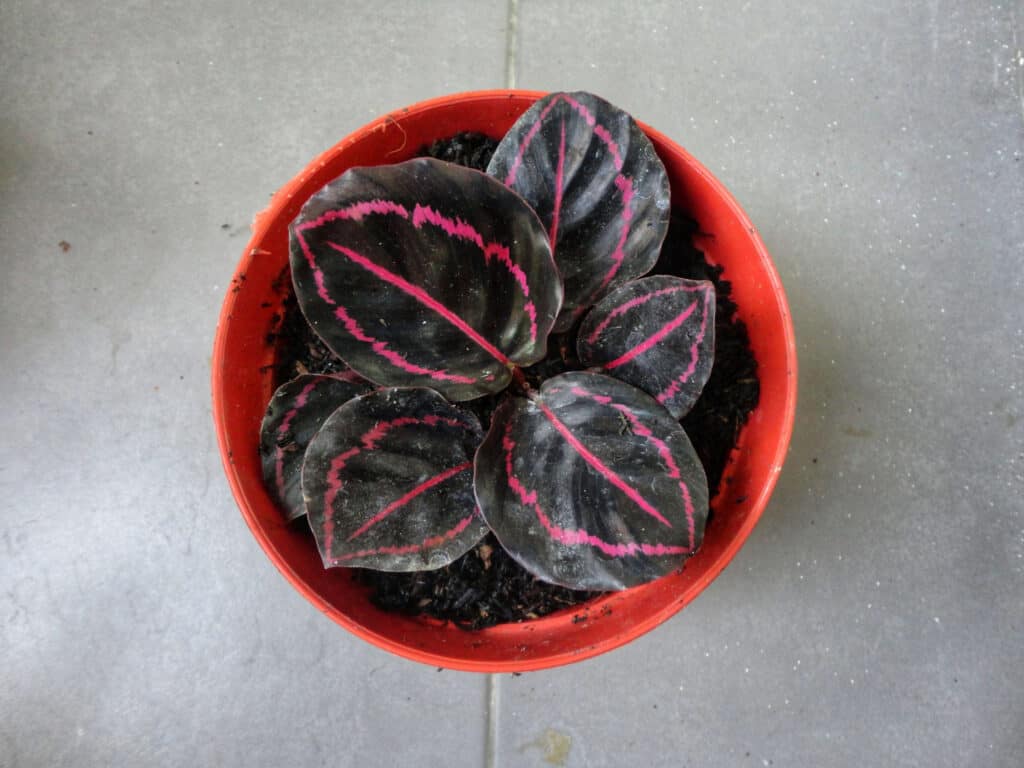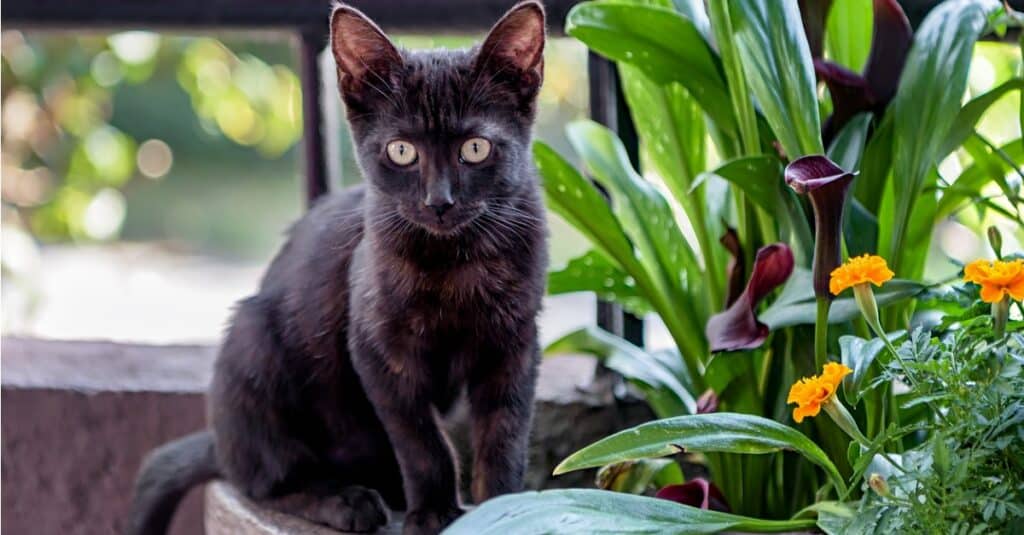For those who are possessed by cats, the question always arises: is this plant safe for my cat? In the case of the lovely calathea, the vivid coloration often concerns owners, knowing that bright colors in other places of nature mean danger. Let’s take a look at this popular houseplant and ask: are calatheas toxic for cats.
Brief Profile: Calathea Plants

The
Calathea roseopicta“Dottie” shows off some of the unique coloring often found in these plants. The bright colors might imply toxicity for cats.
©Francisco Herrera/iStock via Getty Images
- Scientific name: Calathea spp.
- Family: Marantaceae
Thanks to their beauty and ease of care, calathea plants often make their way into homes as favorite indoor plants. The easy to care for plants have wide, bright green leaves with purple undersides. Of the 60-plus species, some of the plants may actually have pink, white, orange, or red patterns on their leaves, which fold up at night.
Are Calatheas Toxic for Cats?
Thankfully, calatheas are a non-toxic plant, perfect for keeping indoors! Cats can technically eat any part of the plant and not suffer from it. Generally speaking, nothing about the plants particularly appeal to kittens or full-grown cats, either, which makes them even better for indoor plants. If they do nibble, they’ll be okay, unless they go overboard.
When Are Calatheas Unsafe?

If your cat overindulges on its calathea snacktime, that’s when the plant becomes dangerous. Otherwise, it’s actually okay for the kitty to take a bite or two.
©hesti19/Shutterstock.com
Generally speaking, your cat won’t have issues with calathea plants. However, some cats don’t know when to stop themselves when eating plants and could overindulge on the leaves, stem, or other parts of the plant. If the cat eats too much, it may become ill, or develop what is known as calathea poisoning. Usually, this shows up in the cat being unwilling to eat, vomiting up bits of the plant, and general feelings unwellness.
If these signs show up, call your vet for help.
Preventing Calathea Poisoning
Calathea may be cat friendly, but overindulgent kitties may still suffer from calathea poisoning. To help prevent this from occurring, place the plants as much out of reach as possible. This could be on high shelves, in hanging planters, in indoor greenhouses, or behind closed doors.
Why Do Cats Chew Plants?
Cats often chew plants, whether the plant is “good” for them or not. A few possibilities may include:
- Boredom
- Playing
- Enjoyment of the plant texture
- Instincts kick in, telling them to eat plants (like they would in the wild)
What To Do About Your Cat and Calatheas

Place your plants carefully to help deter cats from eating them. Even calatheas, nontoxic to cats, can cause issues if the cat eats too much!
©Lux Blue/Shutterstock.com
Though Calathea is safe for your cat, you probably don’t want your kitty getting into them. They could eat a lot of the plant and still make themselves sick, for one. Or, they could kill the plant by “over-pruning” it during snack time.
Since most of us don’t really want our cats and houseplants to mix, you might want to train your cat to keep away. A few tricks can help.
- Redirect the cat’s attention with citrus spray. Most cats dislike citrus so will keep away if you spray citrus deterrents around the pot.
- Plant heavy stones in the container. This won’t keep the kitties away, but it will at least prevent the planter from toppling over!
- Provide healthy plants for your cat to eat instead. Think of catnip, cat grass, and cast iron plants.
The photo featured at the top of this post is © Damian Lugowski/iStock via Getty Images
Thank you for reading! Have some feedback for us? Contact the AZ Animals editorial team.







